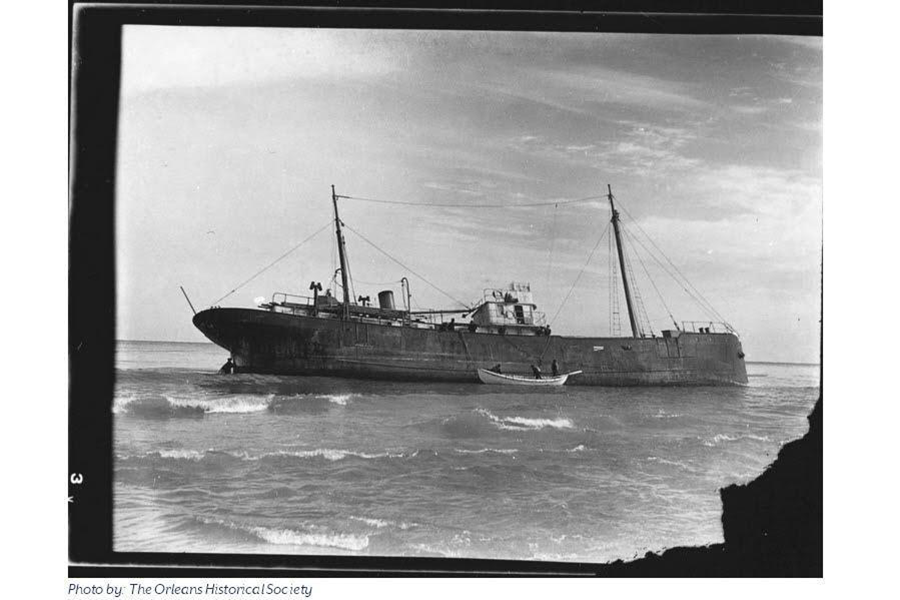Gone for almost 80 years, 1939 wreck of the Lutzen emerges
Loading...
Shifting ocean sands off the coast of Cape Cod in Massachusetts uncovered a World War I-era wreck known as the “Blueberry Boat,” named after the 230 tons of blueberries it was carrying when it wrecked in 1939.
The wreck is located in a 50-mile “ocean graveyard” between Provincetown and Chatham, a stretch of ocean where sandbars have claimed more than a thousand ships. Unlike many other wrecks, the blueberry freighter’s demise was well documented, allowing researchers to track it with little difficulty.
“When we find out about shipwrecks, we usually don’t have that much information,” state Board of Underwater Archaeological Resources director Victor Mastone told The Boston Globe. “But we have a name and precise location for this one so we can monitor it pretty easily.”
Although the Lutzen was originally commissioned during World War I by the French Navy to serve as a minesweeper in the English Channel, it was later converted into a freighter.
The ship spent its later years ferrying cargo and was registered with Lloyd’s Insurance as a steam trawler. On its final journey, the Lutzen carried 230 tons of blueberries between St. John, New Brunswick, and New York City.
On a foggy night in February 1939, the Lutzen ran aground off the coast of Orleans, Mass., killing one crew member who died trying to escape the wreck. The rest of the crew survived, however, and as the wreck was so close to shore, an attempt was made to rescue its cargo.
Local day laborers were hired to carry off the blueberries, until the ship finally tilted and tipped over after a few days time.
“The well-being of frozen goods depends a great deal upon the temperature,” wrote Cape Cod shipwreck historian in his 1973 book, “Shipwrecks Around Cape Cod.” “A warm spell set in and half the cargo was lost to thawing. Many of the berries ended up in Outer Cape blueberry pies.”
Massachusetts waters are home to about 3,500 shipwrecks in total. One of the most famous of these wrecks, the Andrea Doria, is deteriorating quickly, reported The Christian Science Monitor in June. The iconic shipwreck has led more than a dozen divers to their deaths.
Shipwrecks can also be a boon to the scientific community, the Monitor’s Jason Thompson reported in March, noting that scientists can use Florida area shipwrecks to help forecast hurricanes.
The Orleans Historical Society is investigating the Lutzen, as are marine archaeologists and surveyors. Researchers do not currently have plans to move the wreck from its resting place in about 20 feet of water, though Mr. Mastone told the Boston Globe that there are plans in place to investigate it further.
Technology helps, said Mastone:
“It’s an interesting wreck. Even if you can’t visit it, if we can pluck enough data, then we can create a virtual visit.”








